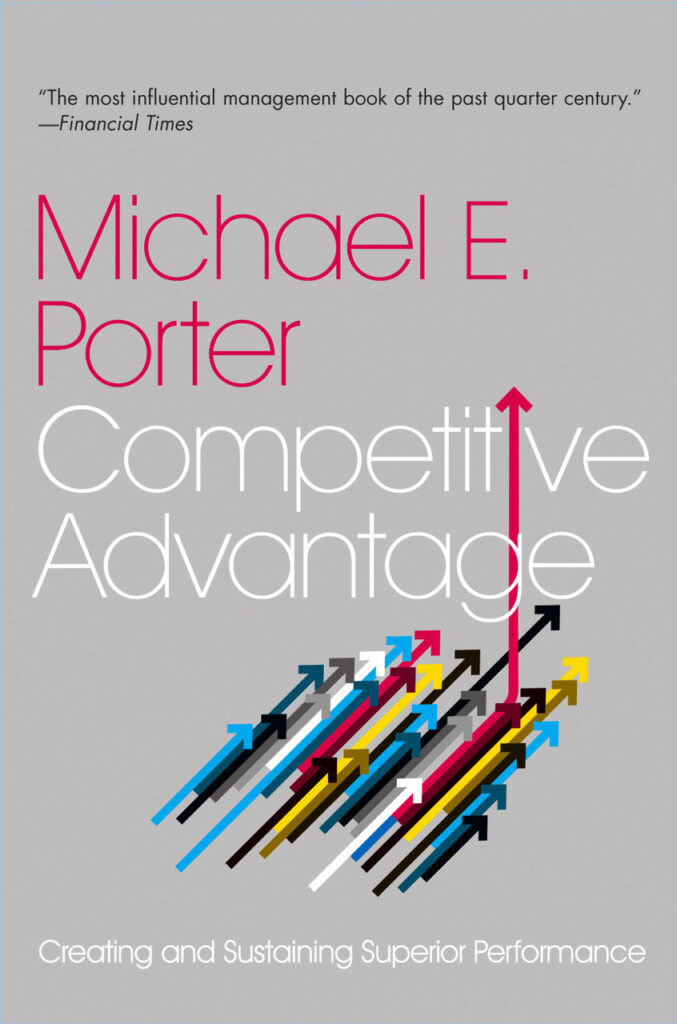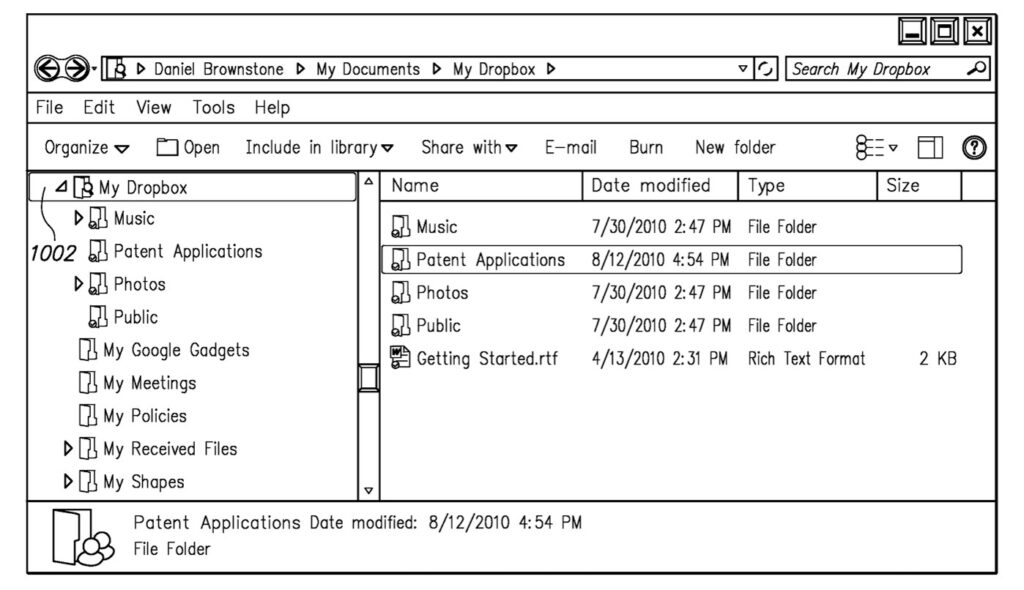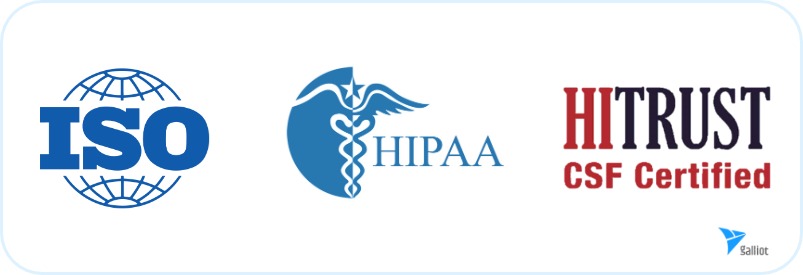Digital Duel: In-House Vs. Outsourcing? Picking the Perfect Path for Product Development

Good tires are safe, versatile for all weather, and can last over 40,000 miles of driving on highways and urban roads. How do you choose your next set of tires for the next 40k miles?
Looking to build a successful digital product? Our article provides valuable insights and tips for navigating the product development landscape, including how to make informed build vs. buy decisions and whether to build an in-house team or outsource.
This is a series of articles about possible choices for product development and working with software outsourcing companies. Choosing the right software engineering vendor can be a make-or-break decision for your business. Here we will talk about building vs. buying a team for developing your product. Previously in our other post, we discussed how you could assess and choose the right software engineering partner for your business.
So, what’s this article all about?
Are you looking to build a digital product but not sure where to start? Well, you’re in luck. In this article, we’ll be discussing the ins and outs of building a digital product, specifically the operations behind it. Whether you’re a product manager, a Director of Engineering, or a CEO of a startup, this article will provide you with valuable tips and tricks for turning your digital product idea into a successful reality. From building mobile applications to creating BI tools on your company’s CRM, there is no limit to what you can deliver with the right team and approach.
Here we’ll cover the following topics to help you find the right choice between in-house development and outsourcing for building your products:
– Find out when to create your own team and when to hire one
– Pros and cons of in-house development vs. hiring a team
– Tips for finding the right software development partner
– How to work effectively with your software vendor
By the end of this article, you’ll better understand both options’ advantages and drawbacks and be equipped to make an informed decision that suits your company’s needs and goals.
Why We’re Qualified to Write About This Topic?
As a software development studio, we at Galliot have worked with many teams and have observed both successes and failures of our customers (yes, we’ve had failed customers and projects in the past). We’ve leveraged our experiences to create a framework for understanding the product development and consulting landscape. So, whether you’re a software startup co-founder in the Bay Area (a potential client for Galliot) or a product manager from other parts of the world, we hope that this article will be a helpful resource for you as you navigate the diverse landscape of this industry. So sit back and get ready to learn some valuable insights about building a digital product that could help take your business to the next level.
Should You Create Your Own Team or Hire One?
When building a digital product, it’s important to start by understanding the classic “build vs. buy” dilemma. This age-old question involves deciding whether to build an in-house team to develop the product or hire an external team to do it. While there’s no definitive answer to this question, making an informed decision for your business will depend on a variety of factors, such as your available resources, long-term goals, and the core focus of your organization. By carefully considering these factors, you can determine whether building or buying a product/service is the best approach for your business. Let’s deep dive and understand the question first: where should you buy, and where should you build?
Where to Buy? Where to Build?
Every company is a unique blend of “buy” and “build” decisions. Take Lyft, for example. While Lyft is primarily a software company, they built a large team to create their core product, the Lyft mobile app and web applications, but they also hired a catering team in San Francisco to ensure their employees have access to healthy, high-quality food. This mixture of buy-and-build decisions may seem straightforward, but there are always exceptions. For instance, Amazon decided to venture into healthcare and own and operate their own healthcare facilities near their fulfillment centers, despite healthcare not being a core service for the company. So why did they make this decision? The answer lies in competitive advantage. But what is a competitive advantage, and how does it relate to buy vs. build decisions? Let’s explore.
💡 About Competitive Advantage:
Competitive advantage refers to the factors that give a company an edge over its competitors, allowing it to outperform them in a particular market or industry. These factors can include things like unique technology, strong brand recognition, efficient production processes, or access to resources or distribution channels that competitors do not have. Essentially, competitive advantage is what sets a company apart from others and enables it to succeed in a competitive market.
The concept of competitive advantage was first introduced by economist Michael Porter in his book “Competitive Advantage: Creating and Sustaining Superior Performance” published in 1985.

Choose The Right Focus
When operating in a competitive market, companies need to establish their competitive advantages in order to succeed. This requires a focus on building up those advantages and investing resources into them. The area of focus will vary from company to company, so it’s crucial to identify where your organization should concentrate its efforts. Once you’ve done that, it’s important to build up your company’s core competencies and consider purchasing external services for areas that are not your core focus. For example, if you’re a software company, you might not have the time or resources to build a recruiting team and come up with a hiring process, so you might choose to buy recruiting services from a vendor while focusing on building up your engineering team. In other cases, you might need to work on user acquisition and ensure that your product fits the market. In such cases, it may be better to outsource the hiring and team management while focusing on delivering the product. Sometimes, factors like budget limitations, time constraints, lack of expertise, or legal obligations can also influence whether you buy or build your team. Regardless, it all comes back to focusing on your competitive advantage and making informed decisions based on your company’s specific situation.

Back-Of-The-Napkin Rules
When it comes to the decision of building vs. buying, there are some back-of-the-napkin rules that can help your decision-making process:
◾ Choose your focus and build in that area while buying for the rest.
◾ Your focus may shift over time depending on budget, expertise, and time limitations.
◾ In the long-term, building can be more impactful than buying.
◾ However, sometimes, a short-term decision to buy may be necessary, with the possibility of changing that decision in the future.
Remember, these rules are not set in stone, and every situation is unique. It’s important to weigh the pros and cons of each option and make an informed decision based on your company’s specific needs and circumstances.
In-House Vs. Hire a Team; Advantages & Drawbacks
We could certainly compile an extensive list of pros and cons for each product development model; however, we’ve distilled the key advantages and disadvantages for your convenience. Keep in mind that this list may vary from project to project, and you may have additional valid points that we haven’t included. So, always consider your unique circumstances to make the most informed decision.
Pros of building an in-house development team:
◾ Complete control over the development process and team structure
◾ Ability to develop custom solutions and maintain full ownership of the resulting IP
◾ Increased transparency and communication within the team and with other departments
Cons of building an in-house development team:
◾ High upfront investment in recruiting, hiring, training, and maintaining a team
◾ Limited flexibility in adjusting team size and skillsets to fit changing business needs
◾ Increased administrative burden and costs for managing employee benefits, workspace, and equipment
Pros of hiring a team to develop your product:
◾ Access to a wider pool of talent and specialized expertise
◾ Allows you to concentrate your limited focus
◾ More flexibility in scaling up or down the team and adjusting skillsets to fit changing business needs
◾ Reduced administrative burden and costs for managing employee benefits, workspace, and equipment
Cons of hiring a team to develop your product:
◾ Possible communication and cultural barriers between the external team and the rest of the organization
◾ Potential lack of control over the development process and team structure
◾ Limited ability to develop custom solutions and maintain full ownership of the resulting IP
Certainly, another option to consider is staff augmentation, which is a hybrid of building and buying. Staff augmentation involves hiring external experts to work alongside your in-house team to fill any gaps in skills or capacity. This approach can be an effective way to scale up quickly while maintaining control over the development process.
A Nostalgic Glimpse at Outsourcing in the Iconic Tom & Jerry Series
You might be surprised to learn that the concept of outsourcing was humorously showcased in the beloved cartoon series Tom & Jerry. In moments of utter frustration, Tom would turn to an outsourcing company called “Helping Hands” for assistance in his never-ending quest to catch Jerry. One notable character from this organization was “Muscle”. A tough guy with a memorable catchphrase, “I hate mice to pieces!” sporting a professional outfit, Muscle became a recurring figure in the series, often called upon by Tom to lend his expertise as a mouse exterminator. Together with his team, Muscle would take on the challenge of capturing the ever-elusive Jerry.

Choosing the Right Development Studio: Navigating the Crowded Market
Now that we have explored the various options for software development, we find ourselves facing a new challenge: selecting the right vendor to partner with. The software development market is vast and diverse, with numerous vendors located all over the world, each with its own unique selling points and pricing, and team structures. This can make it difficult to know which vendor is the right fit for your specific needs.
Creating a digital product that is unique means there is no exact template or roadmap to follow, making it challenging to assess a vendor’s delivery. Even after completing the project, the end result may not be fully clear. Moreover, evaluating a software development studio solely based on product delivery is not an option since it takes 2-3 months to produce a meaningful delivery in any software development project. On top of that, it’s hard to determine which vendor is suitable when you don’t know exactly what needs to be built or who will be building it.
💡 Imagine you’re going on a trip – you might have some idea about where you’re headed, but you don’t know exactly how to get there or what you’ll encounter along the way. In such a situation, it’s best to find a fellow traveler (in this case, a technology partner) who can join you on the journey and explore the unknowns together.

Five Tips For Finding Your Perfect Tech Partner
Finding the right vendor in the vast and diverse software development market can be challenging. However, there are several strategies that can provide you with a structured approach to evaluating potential vendors. Although we have provided a detailed explanation of the “vendor selection” process in another article (How to Select a Software Vendor), we can still offer you 5 general guidelines that will help you refine your vendor list. By following these tips, you can select a vendor that aligns with your unique needs and preferences.
1- The Process is a Key Factor: evaluate the vendor’s process. As with the journey metaphor, it’s best to assess the vendor’s process rather than their price or proposal. Make sure they have a well-defined approach to evaluating your project, ask about their architecture and methodology, and get a sense of how they picture the product development journey. If they have a clear process in place, there’s a greater likelihood that they can deliver.
2- Direct Contact with Past Clients: Don’t rely solely on testimonials provided by the vendor – instead, connect with past and current clients directly, ask for multiple contacts, and conduct interviews to get genuine feedback.
3- Field Expertise: While it may not always be possible to find an exact match for your project, it’s important to choose a studio that has expertise in your area of interest. Keep in mind that expertise usually comes with a higher cost, as these vendors often charge more for their specialized skills.
4- Referrals: Ask for referrals from friends and professional networks who have had successful partnerships in the past. If a vendor has a strong track record of delivering quality products, it’s likely that they can do the same for you.
5- Portfolio Analysis: Look for customers similar to you in terms of size, budget, project, and industry to assess the studio’s ability to deliver with you.
It’s important to note that these 5 guidelines are not inherently quantitative. To make them more concrete, it may be useful to assign weights to each factor based on their importance to your specific business and project needs. Additionally, it may not be feasible to evaluate potential vendors based on every single factor, so it’s crucial to identify the most critical areas and begin the evaluation process from there. For each guideline, consider defining specific areas or questions that can demonstrate a vendor’s suitability for that particular criterion. Ultimately, you should assign a numerical value to each vendor based on your evaluation process and sort them accordingly to determine which vendor is the best fit for your project.
How to Deliver Your Digital Product with the Help of Your Vendor
Let’s recap and reflect on how we got here. At the beginning of this article, we explored the common dilemma between buying and building digital products and the battle between building in-house or outsourcing. We then provided a general framework to help you determine what to build and what to buy, followed by a discussion of the pros and cons of each strategy. Next, we delved into the challenges of navigating the crowded software outsourcing market and provided a framework for evaluating potential vendors. And here we are! In this part of the article, we will go over some best practices that can help you establish a healthy and efficient working relationship with your technology vendor. After completing the previous steps, it’s time to invest in this partnership and work towards delivering your digital product. Let’s get started!
Your Must-Check List Before Sealing the Deal
Before signing the contract with your chosen vendor, there are some crucial factors you should consider to ensure a successful collaboration:
Intellectual Property (IP) Ownership; Essential Considerations for Contracting
While we cannot provide legal counsel, we can offer some important items to consider including in your contract to avoid potential issues in the future. It’s crucial to ensure your contract specifies the ownership of the intellectual property rights of the product at any stage of the engagement. Additionally, the contract should include provisions for the assignment of all copyrights, patents, and other types of IP. In case of using any pre-existing software or 3rd party components, you should make sure appropriate licensing is in place. If you plan on raising funds or already have existing investors, you may need to be more stringent regarding IP ownership and ensure that your contract aligns with the investor’s framework.
IP theft costs the US economy between $225 billion to $600 billion annually [Intellectual Property Commission]. 71% of companies use IP to protect their products or services [WIPO].
Intellectual property is crucial for companies, particularly in the technology industry, as it refers to intangible assets that provide significant value. Trademarks, patents, copyrights, and trade secrets are four types of IP, with many examples over the past decades. To be mentioned Apple’s glass staircase and Amazon’s drone patents, Coca-Cola’s trademark, and Disney’s copyrights (that cover everything from its iconic characters to its theme park attractions).
Dropbox is a perfect example of why safeguarding your IP is essential. Their founders, Drew Houston, and Arash Ferdowsi, filed a patent in 2010 that transformed online file sharing. It showed how multiple users could sync folders and their contents across a network, with version control ensuring everyone can access the latest file. Today, Dropbox has over 14 million users and is a billion-dollar enterprise. Without protecting their asset by patent, they might have had many more users, but they wouldn’t have benefited from it, as is the case with Linux.
Linus Torvalds created Linux, which has since become one of the most widely used operating systems globally, with over 33 million users. However, Torvalds chose not to patent the product, meaning he has received no direct financial benefits from its success.

Working Across Time Zones
When it comes to choosing a vendor, they may be located in a different time zone, but don’t let that stop you from working together efficiently! To avoid any potential issues, it’s important to negotiate a 2-3 hour overlap window in the morning or evening for effective communication and collaboration. This should be included in your contract to ensure both teams are on the same page. Trust us; we’ve learned from experience that this can be a source of conflict, so it’s better to define a window that works for everyone in advance. By planning and scheduling activities around the overlap window, both teams can work like clockwork.
Trust But Verify
If the project is broken into multiple phases, it’s a good idea to sign the contract for the first phase and conditionally approve the continuation of the contract if you are satisfied with your vendor’s work. Ensure that the first phase is long enough for the vendor to establish their team and process and work alongside your team effectively. When assessing their work at the end of the first phase, it’s important to be fair and consider all factors. Keep in mind that you may not always get the expected results, but in a fair situation, the vendor has delivered what they could. Establishing a fair relationship from the outset is critical since an unfair relationship is not sustainable in the long-term. Trust us; it’s like a relationship!
Production Support
Production support is typically never discussed with vendors and comes as a surprise when the product is launched and costs a lot to maintain. When finalizing your contract, it’s essential to include provisions for ongoing production support. This contains clarifying the vendor’s responsibilities for maintaining the product, providing bug fixes, and handling any technical issues that may arise post-launch. Clearly defining the support period, response times, and service level agreements (SLAs) will help ensure a smooth transition to the operational phase and minimize any disruptions to your users or customers.
Note that support and development contracts can differ and be discussed separately. However, there is usually some level of support within the development contract, and you should make sure to have these options. Remember that this is a topic to discuss as soon as possible.
Industry Compliances and Standards

Each industry has its own regulatory and standard requirements. Considering these regulations during a product’s design and architecture process can reduce costs, mitigate risks, and decrease the required time. Ultimately, this ensures your product meets the necessary standards for the go-to-market phase.
For example, compliance with regulatory frameworks such as HIPAA, SOC2, HITECH, HITRUST, PSQIA, and others is of utmost importance in the healthcare industry. If your digital product falls within this industry, it’s crucial to assess the vendor’s experience and expertise in coding within these regulatory frameworks. Ensure that the vendor has a solid understanding of the compliance requirements and has successfully implemented solutions in similar environments.
The Real Work: After Signing with Your Vendor
With a signed contract in place, it’s time to focus on building a strong partnership with your vendor that’s dedicated to delivering your product. When you choose the right vendor, they will work hard to ensure your success because their own success is tied to yours. To help you navigate this partnership successfully, we’ve compiled some tips and best practices.
The Write Stuff: Mastering Communication with Your Vendor
Effective communication is key to a successful partnership with your vendor. While verbal communication is important, it’s crucial to have a written record of tasks, meeting notes, and other important information to ensure that everyone is on the same page. This is particularly important as there’s a chance that a vendor team member may miss something or be hesitant to bring up an issue. To avoid wasting time on misunderstandings, ensure that all important information is documented and readily available to all team members.
💡 Project Knowledge Base; Confluence or Notion?
Investing time and effort in creating a well-structured Knowledge Base for your project is highly beneficial. Request your vendor to manage and maintain the Knowledge Base, but ensure it is well-written and serves as a reliable source of truth for the entire team. The Knowledge Base can be built using platforms such as Confluence, Notion, ClickUp, Google, Basecamp, or any other tool you prefer. What’s important is keeping the project management space up-to-date and encouraging active usage by the team.
In the future, you may need to collaborate with other vendors or internal teams. To facilitate seamless collaboration, make certain that the Knowledge Base is easily understandable by individuals outside your project. This will help maintain consistency, efficiency, and knowledge sharing across different teams and stakeholders.
Ditch the Micromanagement & Trust Your Experts!
When you hire a team of skilled and experienced individuals to build your digital product, it’s important to trust their expertise and let them work collaboratively with your organization. Micromanaging not only wastes your time and money but also sends the wrong signals to your team. While you still own the project, and they need to be accountable, micromanaging is not an effective approach, especially when you’re working with a team of experts. Instead, provide them with some space and define success metrics, allowing them to figure out the best approach. If you’ve chosen the right vendor, they will deliver on their job. After all, that’s what you’re paying them for!
Final Words
Every company engages in outsourcing certain activities, and product development is no exception. However, it is crucial to thoroughly assess your organization and project circumstances, and carefully weigh the pros and cons of in-house versus outsourced development. Keep in mind the key factors we’ve explored, such as area of focus, time, expertise, scalability, and execution. The optimal decision will ultimately hinge on various elements, including resources, company focus, and strategies. By adhering to the guidelines presented in this article and selecting a reliable, experienced partner, you can lay the groundwork for your project’s success.
At Galliot, we take pride in our successful partnerships with our clients, serving as their technical extension and assisting them in delivering their products or services. Contact us today to discover how we can help you build your engineering team. You can use the contact form below this page or email us at hello@galliot.us.
Get Started
Have a question? Send us a message and we will respond as soon as possible.
Leave us a comment